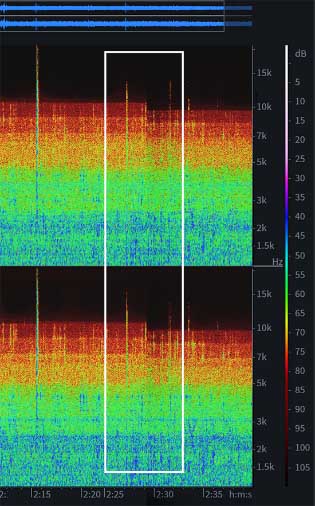
Audio Authentication and Forensics
There is a wealth of information contained in any digital audio recording, information independent of the digitized audio, itself. These clues can be used by an audio forensicist to determine if there is evidence of potential alteration to a recording or, conversely, affirm its authenticity.

Verification of the authenticity of a digital audio file involves comparing the submitted evidence to a standard, a recording made using the same applicaton or on the same make and model of device the audio in question is purported to have been recorded on. Tests include a careful comparison of metadata, frequency spectrum and other parameters, as well as critical listening by an audio professional trained to discern tell-tale signs of alteration.
If the audio evidence passes these tests, it can be said to be consistent with an original recording, free of tampering. However, if anomalies are revealed by the comparison or, more significantly, the metadata indicates that the submitted evidence was last saved on an application with audio editing capabilities, the evidentiary value of the recording should necessarily be called into question.
Forensic analysis of audio does not start and end with authentication. Much more information can be gleaned from an audio recording. For example, relative distances of speakers from the recorder can be calculated; background noises can often be identified, and the probability that a voice in a recording is that of a known suspect can be quantified using sophisticated software.
Owner/engineer Eric Westfall, with 40 years professional audio experience, is certified as having completed the National Center for Media Forensics's course in forensic authentication of digital audio. Determinations of authenticity done by Clarion Labs include a detailed report indicating the tests conducted and the results of each test.
